Rendezvous

Brief Synopsis
Cast & Crew
William K. Howard
William Powell
Rosalind Russell
Binnie Barnes
Lionel Atwill
Cesar Romero
Film Details
Technical Specs

Synopsis
The sinking of a United States warship in the Atlantic in 1914 by a German submarine prompts Washington to take special measures to insure that the Germans are kept ignorant of the exact location of Navy vessels sailing the Atlantic. A high-level military meeting results in an agreement to create a convoy system, whereby British destroyers will meet U. S. troop ships at a secret rendezvous location in the Atlantic and escort them safely to the French coast. The plan hinges on a new strategy in which the exact location of the rendezvous will be transmitted at the very last moment to the ships by a wireless code. Major William Brennan, a military cryptologist with three years' experience on the European front, provides the War Department with the new code, which is to be tested on a munitions ship rendezvous before it is used for a troop ship. Meanwhile, at the nearby Park Hotel, the German intelligence headquarters buzzes with espionage acitivity. Bill Gordon, a former newspaperman and author of an invaluable book on military codes, is about to leave for Europe, where he plans to serve his country on the battlefront, when he becomes romantically involved with socialite Joel Carter. The meddling Joel falls in love with the lieutenant and, upon discovery of his expertise in cryptology, arranges to have him transferred to a desk job at the War Department through her uncle, John Carter, who is the Assistant Secretary of War. For Bill, Joel throws over suitor Colonel Nieterstein, who, unknown to her, is loyal to his German fatherland and reads top secret military information over the phone to Dr. R. A. Jackson, a contact in San Diego. One such message alerts the spies as to the exact bearings of a mid-sea Navy rendezvous scheduled for the next day. Aware of the War Department's trial run, Nieterstein advises the Germans not to pursue the munitions-carrying S. S. Dependable , but to wait instead for a bigger pay-off, a troop ship. Bill protests his reassignment to a desk job, but quickly proves his worth when he cracks the German code and learns that the enemy has decoded the Americans' new code and knows about the S. S. Dependable . The military has three days in which to either find the code thieves and retrieve the code, or intercept all future German spy communications. When Brennan suspects that his mistress, Olivia, is an undercover enemy agent, he sets a trap for her, and she falls for it. Fearing for her safety, Olivia kills Brennan but, after reporting the incident to her superiors, is told to sacrifice herself to Army investigators to prevent trouble for Germany. Olivia complies with the order and is captured by Bill, who calls her bluff at a restaurant with a phony deciphered message he says he found in her mailbox. Olivia is about to confess when Joel and Nieterstein show up at their table and interrupt her. Having been slipped a message by another German agent, which says that Nieterstien is to be sacrificed to the U. S. Army in order to give the false impression that it is once again safe to send their ships coded messages, Olivia provides Bill with evidence of Nieterstein's complicity in the espionage ring. Upon his arrest, Nieterstien commits suicide. Bill and Olivia go to the Park Hotel and are followed by the jealous Joel, who is taken hostage by members of the German intelligence network. The agents use Joel as a bargaining tool to force Bill, who has also been captured, to decode the latest rendezvous location. Bill translates the code and is then granted a private meeting with Joel, which is interrupted by a spray of bullets from a machine gun. Bill and Joel manage to escape death and overpower their would-be assassins just as Department of Justice agents arrive. The authorities, having been tipped off by Bill's encoded message, arrest the spies and send orders to arrest Dr. Jackson in San Diego. As promised by Carter, Bill is granted permission to fight in Europe, but just as his train is about to leave, his reassignment to a local desk job arrives.

Cast

William Powell

Rosalind Russell

Binnie Barnes

Lionel Atwill
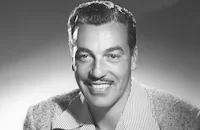
Cesar Romero
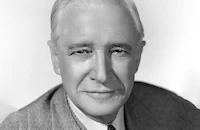
Samuel S. Hinds
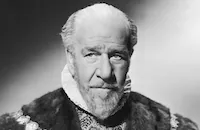
Henry Stephenson
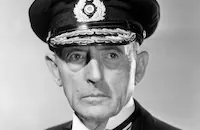
Frank Reicher

Leonard Mudie
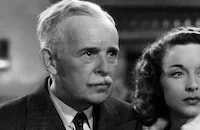
Howard Hickman
Charles Trowbridge
Murray Kinnell

Sterling Holloway

Mickey Rooney
Charles Wilson

Melville Cooper
Bert Morehouse
Blair Davies
Cyril Ring
Rollo Dix
Earl Eby
Bob Perry
Henry Mowbray
Mary Forbes
Lowden Adams
Eric Wilton
Winter Hall
Sherry Hall
John Arthur
Leonid Snegoff
Jack Hatfield
William Stack
Richard Powell
Samuel R. Mcdaniel
James P. Burtis

James Flavin
Arno Frey
Al Bridge
Jeanie Roberts
Bernadene Hayes
Harry "zoop" Welsh
Morgan Wallace
Monty Vandegrift
Rudolph Amendt
Sam Ash
Sidney Bracy
Frank Lackteen
Charles Coleman
Wally Maher
Harry C. Bradley
Lee Kohlmar
Tom Dugan
Guy Usher
Crew
Dr. William Axt
E. A. Dupont
Cedric Gibbons
James Wong Howe
Herman Mankiewicz
Horace Mccoy
George Oppenheimer
Howard Emmett Rogers
Douglas Shearer
Bella Spewack
Samuel Spewack
Dolly Tree
Lawrence Weingarten
Edwin B. Willis
P. J. Wolfson
Joseph Wright
Hugh Wynn
Dolph Zimmer

Film Details
Technical Specs

Articles
Rendezvous
The Black Chamber, which was one of the working titles of the movie during production, was actually founded after the war and headed by Yardley for several years. Officially known as the Cipher Bureau, it was the first U.S. peacetime agency dealing with code analysis and the forerunner of the National Security Agency. It was shut down in 1929. Two years later, Yardley, out of work and needing money, wrote the book that formed some of the basis for the screenplay of Rendezvous.
At the time of production, Powell was one of MGM's biggest stars and already closely identified with Myrna Loy, with whom he had co-starred in three pictures, including The Thin Man (1934). They would go on to appear together ten more times. Powell and Loy had most recently teamed for Evelyn Prentice (1934), which featured a young stage actress making her motion picture debut, Rosalind Russell. After the success of The Thin Man and other films, Loy went on strike for higher pay, so she was unavailable for Rendezvous. Russell was cast and given her first star billing opposite Powell, a prospect that made her nervous at first. She approached her leading man apologetically, telling him she knew he preferred to work with Loy, but he quickly put her at ease, assuring her that was not the case and that she would do very well in the part. "He was not only a dear, he was cool," she later wrote in her autobiography. "If an actor thought he could get any place by having tantrums, watching Bill Powell would have altered his opinion. I remember a story conference during which he objected to a scene that he felt wasn't right for him. He was at once imperious and lucid. 'It's beyond my histrionic ability to do this,' he said. I thought that was delicious."
Russell's role was that of a socialite in love with Powell who tries to get him a nice safe desk job. Their relationship injected notes of humor and romance into the spy drama. Some critics were rather unkind in comparing her to Powell's more popular co-star, calling Russell a "second-string Myrna Loy" and claiming her comic moments were too "kittenish." Powell on the other hand was praised for his "sleek banter and that blend of bored nonchalance and razored shrewdness" that had served him well in earlier roles.
Good notices also went to supporting players Cesar Romero as a German operative, Lionel Atwill as chief of the American code agency, and Binnie Barnes as the agent who holds the key to the mysterious code. All in all, Rendezvous was deemed a "lively and amusing melodrama."
The picture, under various working titles ("Blonde Countess," "White Bird," "Puzzle Man"), was shot in just five weeks during June and July 1935, but it wasn't without some difficulties and delays. Shooting was suspended briefly because of Binnie Barnes's appendicitis. After the Hollywood Reporter reported in August that the production was shutting down to rewrite and reshoot the entire picture, director William Howard wrote in to the publication to deny rumors that the delay was actually due to dissatisfaction with Barnes's performance. He did, however, admit that the production never had a satisfactory ending from the outset and that they hoped preview audience reactions would help them find a better ending. Howard also took the opportunity to announce he was leaving the production for another assignment. Sam Wood took over the direction of Rendezvous and James Wong Howe replaced William Daniels as the cinematographer. Neither Wood nor Howe got on-screen credit for their work.
Among the now well-known names playing uncredited bits in the film are 15-year-old Mickey Rooney and the Marx Brothers' frequent comic foil Margaret Dumont.
The story was later updated to World War II as Pacific Rendezvous (1942) with Lee Bowman and Jean Rogers in the Powell and Russell roles. Yardley's book was not credited as a source, nor were adapters Bella and Sam Spewack, but two of the original scripters, P.J. Wolfson and George Oppenheimer, were given credit for the remake's screenplay.
Producers: William K. Howard, Lawrence Weingarten
Director: William K. Howard; Sam Wood (uncredited)
Screenplay: Herbert O. Yardley (book "American Black Chamber"); Bella Spewack, Samuel Spewack (adaptation); P.J. Wolfson, George Oppenheimer
Cinematography: William Daniels; James Wong Howe (uncredited)
Art Direction: Cedric Gibbons
Music: Dr. William Axt
Film Editing: Hugh Wynn
Cast: William Powell (Lt. William 'Bill' Gordon/Anson Meridan), Rosalind Russell (Joel Carter), Binnie Barnes (Olivia Karloff), Lionel Atwill (Maj. William Brennan), Cesar Romero (Capt. Nicholas 'Nikki' Nieterstein), Samuel S. Hinds (John Carter, Assistant Secretary of War), Henry Stephenson (Russian Ambassador Gregory), Frank Reicher (Dr. R.A. Jackson), Charley Grapewin (Prof. Martin), Leonard Mudie (Roberts).
BW-95m. Closed Captioning.
by Rob Nixon

Rendezvous
Rendezvous
Rendezvous was based on a non-fiction book called The American Black Chamber by Major Herbert O. Yardley (head of the United States Secret Service during World War I) about code-breakers during WWI. Bella and Samuel Spewack adapted Yardley's book into a film with additional assistance from screenwriters P. J. Wolfson and George Oppenheimer. Powell plays a cryptographer who falls in love with a socialite (Russell). Russell tries to get Powell a safe desk job by pulling strings and meddles (as socialites often did in 1930s films) into everyone's business. There was something for everyone in Rendezvous: drama, espionage, romance and comedy to boot.
Production was a quick five weeks, from June 24th July 29th 1935. The Hollywood Reporter wrote that co-star Binnie Barnes' appendicitis delayed shooting briefly, but there were other problems. Director William K. Howard fended off rumors in the press that the film wasn't working and needed extensive reshoots by printing a letter in the Reporter saying the studio "was trying to decide on a very effective last act for the picture...which will exploit the talents of Miss Rosalind Russell." He did say that "the production never had a satisfactory ending" and, as is common in Hollywood, the producers were waiting for preview audience's reactions before deciding on retakes. At the same time Howard had to leave the production as he was obligated to start work on another film and Sam Wood took over. Howard Emmett Rogers and Herman Mankiewicz worked on the new script. Cameraman William Daniels (Garbo's favorite cameraman and who later shot I Love Lucy) was also pulled off Rendezvous to start on another picture so James Wong Howe did the reshoots, which took place September 6th 26th 1935.
The results must have been worth the hassle. When Rendezvous was released on October 25th critics were pleased though Russell suffered from comparisons to Myrna Loy. New York Times critic Andre Sennwald wrote "William Powell dashes urbanely in pursuit of the German espionage ring in the humorous and rousing spy melodrama called Rendezvous. With sleek banter and that blend of bored nonchalance and razored shrewdness that make him one of our most attractive performers, he introduces us to the counter-espionage maneuvers described by Major Herbert O. Yardley in The American Black Chamber. Assisted by Miss Rosalind Russell, Metro-Goldwyn-Mayer's second-string Myrna Loy, and a fascinating web of secret codes, he keeps the entertainment consistently vigorous even when it threatens to collapse into conventional spy patterns. Although the criticism is probably knavish, I must confess to a suspicion that the comedy relief assigned to Miss Russell in the role of a lady who refuses to be serious about the machinations of the enemy agents might have seemed considerably less kittenish if Miss Loy had been in the part. Occasionally the game becomes so bewildering as it approaches the solution that you are reminded of the hilarious hide-and-seek activities of Ben Turpin several years ago in Million Dollar Legs (1932). Under the able management of William K. Howard, the film preserves its sense of humor without disturbing its omnipresent air of mystery. There are effective performances by Mr. [Cesar] Romero as the wily German operative, Lionel Atwill as the helpless American chief and the charming Miss Barnes as the agent who holds the key to the enigma. With Mr. Powell at his debonair best, Rendezvous emerges as a lively and amusing melodrama."
Producers: William K. Howard, Lawrence Weingarten
Directors: William K. Howard, Sam Wood (uncredited)
Screenplay: P.J. Wolfson, George Oppenheimer; Bella Spewack, Samuel Spewack (adaptation); Herbert O. Yardley (book "American Black Chamber")
Cinematography: William Daniels, James Wong Howe (uncredited)
Art Direction: Cedric Gibbons
Music: Dr. William Axt
Film Editing: Hugh Wynn
Cast: William Powell (Lt. William 'Bill' Gordon/Anson Meridan), Rosalind Russell (Joel Carter), Binnie Barnes (Olivia Karloff), Lionel Atwill (Maj. William Brennan), Cesar Romero (Capt. Nicholas 'Nikki' Nieterstein), Samuel S. Hinds (John Carter, Asst. Secretary of War), Henry Stephenson (Russian Ambassador Gregory), Frank Reicher (Dr. R.A. Jackson)
BW-95m. Closed captioning
by Lorraine LoBianco
SOURCES:
Life Is a Banquet by Rosalind Russell and Chris Chase
The New York Times: Rendezvous: a Spy Melodrama Now at the Capitol Theatre by Andre Sennwald, October 26, 1935
The AFI Film Guide
The Internet Movie Database
Rendezvous
Quotes
Trivia
Notes
Working titles for this film were Blonde Countess, White Bird, Puzzle Man and The Black Chamber. According to contemporary sources, Herbert O. Yardley, the author of the book on which the film was based, was head of the United States Secret Service during World War I. Rendezvous marked Rosalind Russell's first star billing in a film. Hollywood Reporter pre-production news items indicate that the picture was originally intended as a William Powell-Myrna Loy vehicle, and that A. E. Dupont, who aided producer Lawrence Weingarten on the script, was named as a possible director. The extent of Dupont's participation on the film has not been determined. While Hollywood Reporter production charts and pre-release news items list actors Alan Cavan, Lee Phelps, Zita Johann, Hedwiga Reicher (actor Frank Reicher's sister), Belle Mitchell, Jerry Mandy, Haila Stoddard and Walter King (formerly known on Broadway as Walter Woolf) in the cast, their appearance in the released film has not been confirmed. July and August 1935 Hollywood Reporter news items note that production on the film was suspended due to actress Binnie Barnes' bout with apendicitis. A day after it erroneously reported that M-G-M had decided to re-write and re-shoot the entire picture, Hollywood Reporter, on August 24, 1935, clarified the matter by printing a letter written by director William K. Howard, who denied the implication that the studio was dissatisfied with Barnes's work. He wrote that "M-G-M is trying to decide on a very effictive last act for the picture...which will exploit the talents of Miss Rosalind Russell." The director conceded that from the start the production "never had a satisfactory ending," and that they were awaiting the results of preview audience reactions to a better ending. Howard also wrote that he was leaving the production because he had taken an assignment on a Walter Wanger film. Sam Wood then took over the direction of the film and Herman Mankiewicz and Howard Emmett Rogers were assigned to the script. James Wong Howe replaced William Daniels as the photographer. Hollywood Reporter also noted that George Kaufman was to sit in on some of the story meetings, and that some seventeen new sets would be constructed for the second round of filming.
Although onscreen credits list Lionel Atwill's character as "William Brennan," his spoken name in the film is "Charles." Also, while most contemporary sources list Cesar Romero's character as "Nickolajeff," the film credits and dialogue refer to him as "Nieterstein." The Variety review erroneously refers to actor Cesar Romero as Hugh Romero. The released film was cut from its preview length of 106 minutes. Modern sources indicate that the casting of Rosalind Russell as William Powell's co-star, instead of his usual teaming with star Myrna Loy, was due in part to Loy's absence from M-G-M during her strike for better pay. Rendezous was remade by M-G-M in 1942 as Pacific Rendezvous, directed by George Sidney and starring Jean Rogers and Mona Harris.

















